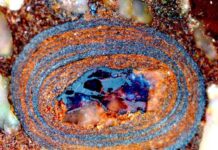An international team of researchers took a look at bear and supposed yeti DNA samples to better pinpoint the origin of the mythological creature. The researcher’s results imply that yetis were hardly paranormal or even strange, but the results also helped paint a better picture of the bears living in the Himalayas.
“Our findings strongly suggest that the biological underpinnings of the Yeti legend can be found in local bears, and our study demonstrates that genetics should be able to unravel other, similar mysteries,” said study lead scientist Charlotte Lindqvist of the University at Buffalo College of Arts and Sciences.
“This study represents the most rigorous analysis to date of samples suspected to derive from anomalous or mythical ‘hominid’-like creatures,” the study said, “strongly suggesting the biological basis of the Yeti legend as local brown and black bears.”
Prior to this study, “despite decades of research and anecdotal association with bears and other mammals in the region, the species identity of the mysterious Yeti is still debated, given the lack of conclusive evidence,” the authors noted in the study.
The researchers studied samples such as a scrap of skin from the hand or paw of a Yeti — part of a monastic relic — and a fragment of femur bone from a decayed Yeti found in a cave on the Tibetan Plateau. The skin sample turned out to be from an Asian black bear and the bone from a Tibetan brown bear.
The bears can grow as long as 7 feet and weigh as much as 350 pounds.
“Clearly, a big part of the Yeti legend has to do with bears,” Lindqvist said.
Another important finding was that the brown bears roaming the high altitudes of the Tibetan Plateau and the brown bears in the western Himalayan mountains appear to belong to two separate bear populations, she said. The two groups have been separated from one another for thousands of years, despite their relative geographic proximity.
The Yeti samples that Lindqvist examined were given to her by Icon Films, which featured her in an Animal Planet special Yeti or Not about the origins of the fabled being.
Would this technology work on samples of America’s notorious Bigfoot, aka Sasquatch? “Yes, it definitely would,” she said, adding that another study looked at Bigfoot samples, which suggested they came from various animals, including the American black bear, a cow and a raccoon.
“The approach that we used would be able to precisely determine the identity of other purported Bigfoot samples,” she said.















